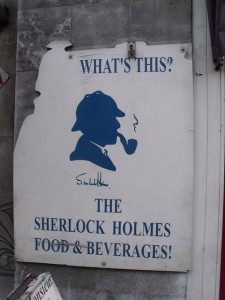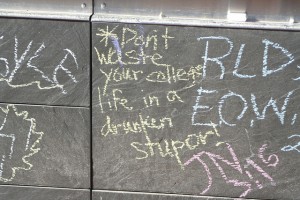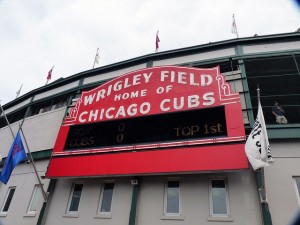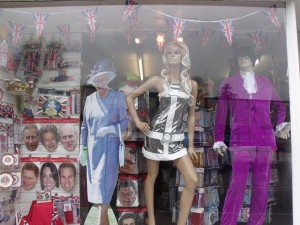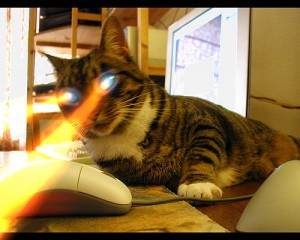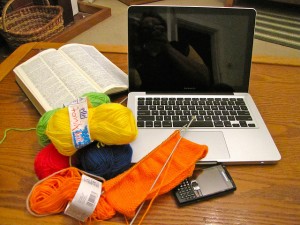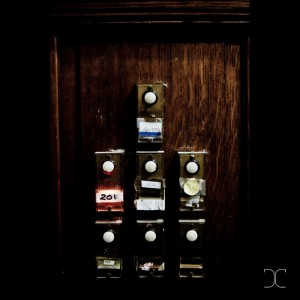 The European Court of Justice just released today its Deckmyn judgment, where it defines what a parody is under European Union law. I wrote about it a while ago, and will come back to it. Meanwhile, there is an interesting parody case just here in New York, David Adjmi v. Dlt Entertainment Ltd., 14 cv.0568.
The European Court of Justice just released today its Deckmyn judgment, where it defines what a parody is under European Union law. I wrote about it a while ago, and will come back to it. Meanwhile, there is an interesting parody case just here in New York, David Adjmi v. Dlt Entertainment Ltd., 14 cv.0568.
Plaintiff David Adjmi is a playwright, and his plays have been performed at the Royal Shakespeare Company in England, Lincoln Center, and the American Repertory Theather among others. He wrote 3C, an original play parodying the television show Three’s Company, which ran from 1977 to 1984. Defendant DLT Entertainment holds the copyright to Three’s Company. It sent Plaintiff a cease and desist letter in June 2012, asking that the production of 3C, which played Off Broadway in 2012, to be stopped. After the production ended as scheduled in July 2012, a publisher expressed interest in publishing 3C in a book of Plaintiff’s plays, and an another publisher want to prepare an acting edition of 3C, and also license its future productions on behalf of the playwright.
Plaintiff then filed suit in the Southern District of New York (SDNY) on January 30, 2014, seeking a declaration that his play does not infringe DLT’s copyright, and filed an amended complaint in February 25. Defendants filed a counterclaim for copyright infringement against both the playwright and the producers of 3C, claiming that the play is not fair use, but rather is an unauthorized derivative work. The playwright moved for judgment on the pleading, and, on August 25, filed a memorandum of law to support this motion, addressing the four fair use factors.
The doctrine of fair use is codified in the Copyright Act of 1976, 17 U.S.C. §107, and provides an affirmative defense to a copyright infringement claim. 17 U.S.C. §107 lists four non-exclusive four factors , which the courts consider when determining if a particular use of a protected work is fair:
“(1) the purpose and character of the use, including whether such use is of a commercial nature or is for nonprofit educational purposes;
(2) the nature of the copyrighted work;
(3) the amount and substantiality of the portion used in relation to the copyrighted work as a whole; and
(4) the effect of the use upon the potential market for or value of the copyrighted work.”
A determination of fair use is a mixed question of law and fact, and no factor is dispositive. The memorandum of law argues that the play is a parody, and, as such, is “quintessential fair use.” It cites the Campbell v. Acuff-Rose Music case, where the Supreme Court explained that “the heart of any parodist’s claim to quote from existing material, is the use of some elements of a prior author’s composition to create a new one that, at least in part, comments on that author’s work.” As such, parody is speech protected by the First Amendment.
In Three’s Company, Chrissy and Janet are sharing an apartment in Santa Monica with Jack. Although their relationships are platonic, Jack is pretending to be gay as their landlord frowns upon a man being the roommate of two women. 3C also features two women sharing platonically an apartment with a man. However, the man is really homosexual, but has not revealed his sexuality publicly, as he is afraid of people’s reactions. Indeed, his landlord is homophobic. One of the women is a cocaine user and has been in an abusive relationship. The other woman has very poor self-esteem to the point she allows her lecherous landlord to molest her.
The memorandum argues that the play “demonstrates how some of the assumptions and stereotypes on which the superficial comedy of Three’s Company was based were harmful, even toxic, to real people.” Plaintiff stated in his original complaint that, in writing 3C, he “wanted to deconstruct the sunny, silly sitcom visions of Three’s Company and contrast it with the reality of life in the 1970’s for many people.” The complaint states further that “Three’s Company was a light-hearted farce; 3C is heavy and dark” and that that 3C is a parody and thus fair use.
The memorandum addresses the four fair use factors. As for the first factor, the purpose and character of the use, Plaintiff argues that he “altered [Three’s Company’s] characters and invented his own plot for them.” He parodied the television show “to expose and criticize the toxic assumptions about sexuality, gender, and age at the heart [of the show.]” As such, the use of the original work is transformative. In Campbell, the Supreme Court explained that the first factor must aim at determining whether the new work merely supersedes the original work or if the use is instead transformative.
Plaintiff also argued that the second factor, the nature of the original work, should weigh in his favor, albeit he did not elaborate much. It is surprising that Plaintiff did not reiterate there that his work is creative.
As for the third factor, the amount and substantiality of Plaintiff’s use in relation to the original work, the memorandum quoted the Seventh Circuit case Chicago Bd. Of Educ. v.Substance, Inc., where the court recognized that “a parodist has to be able to quote, sometimes very extensively, from the parodied work in order to make the criticism.” It also quoted the Campbell case, where the Supreme Court explained that copying for parodic purpose “does not become excessive… merely because the portion taken was the original’s heart.”
It also cited the Eleventh Circuit‘s Suntrust Bank v. Houghton Mifflin Co. case, which is probably the most permanent case law in that matter. The Eleventh Circuit found the novel The Wind Done Gone, written by Alice Randall, to be fair use, even though it had appropriated characters, plot, and major scenes from Gone With the Wind, as the novel “generally sets out to demystify GWTW and strip the romanticism from Mitchell’s specific account of this period of our history.” The Eleventh Circuit defined parody as a work aiming to “comment upon or criticize a prior work by appropriating elements of the original in creating a new artistic, as opposed to scholarly or journalistic, work.” Plaintiff acknowledged the title of the play refers to the television show, but that he did not copy dialogue and added many new elements,
Plaintiff notes that the fourth factor, the effect on the market for the original work “generally weighs in favor of a parodist,” noting that , if only licensed parody would be permitted, a copyright owner could prevent parody of his work, to the detriment of free expression. A parody does not satisfy the demand for the original, and plaintiff argues his play, which has so far only played for a limited time Off Broadway, does not fulfill the demand for the television show, which is still in syndication.
Image is Ye Olde Doorbell (306/365) by Flickr user derrickcollins, under a CC BY-ND 2.0 license.
CC BY-ND 2.0)
